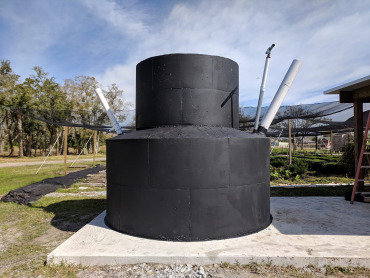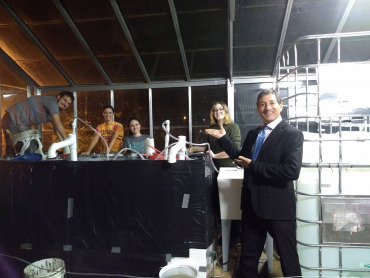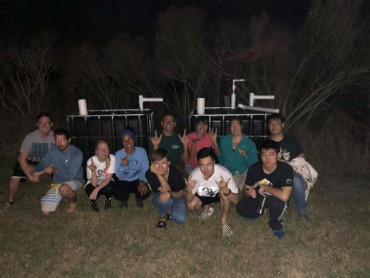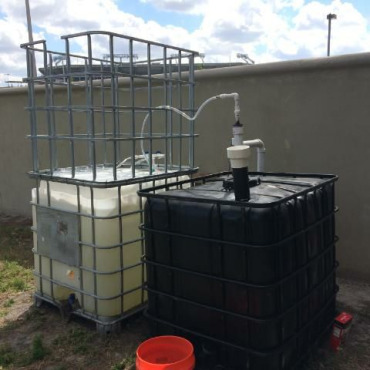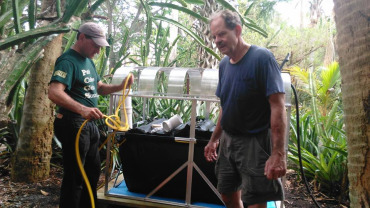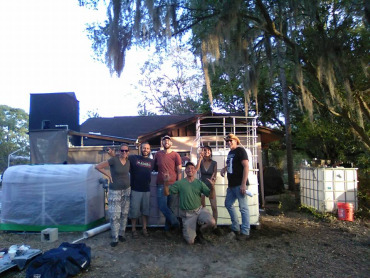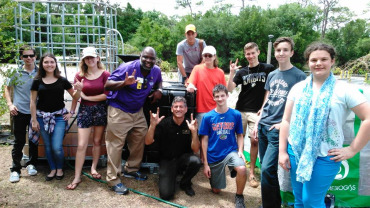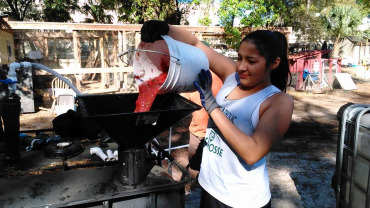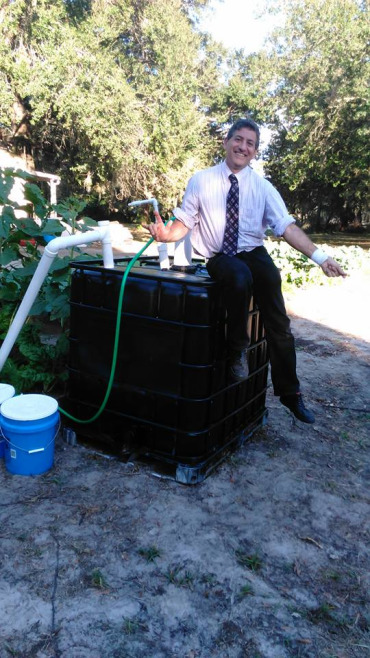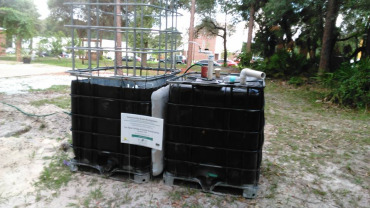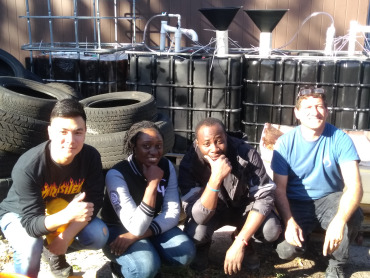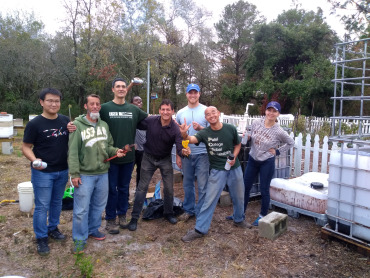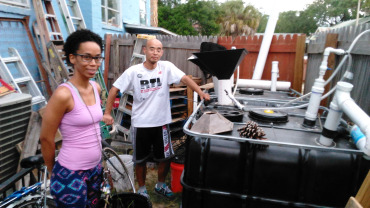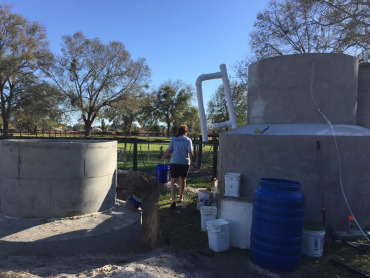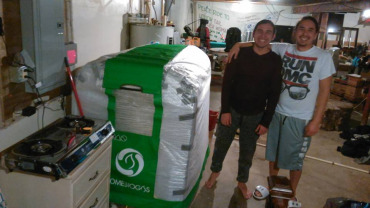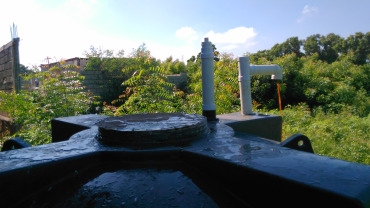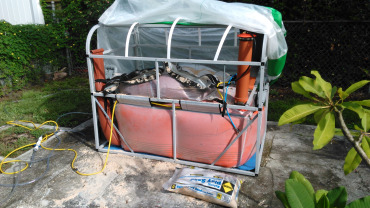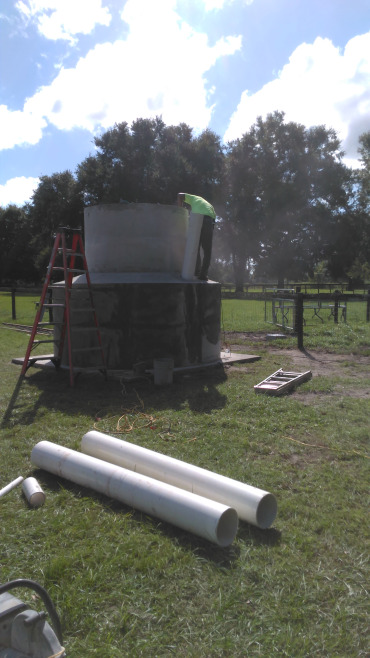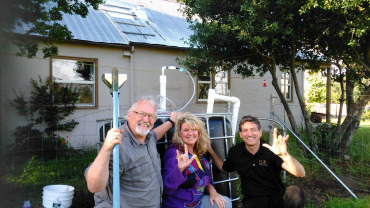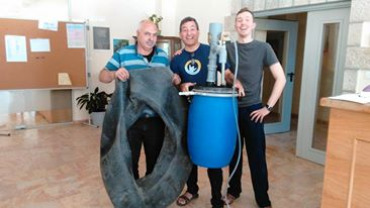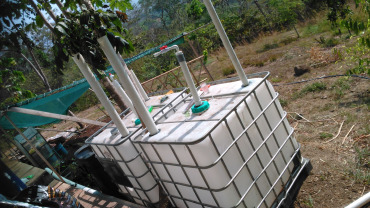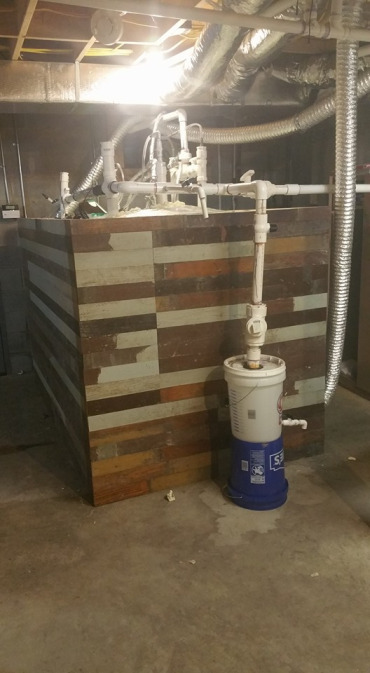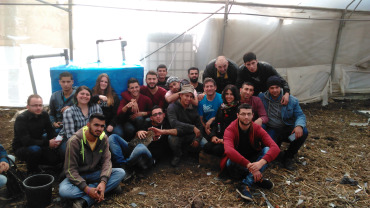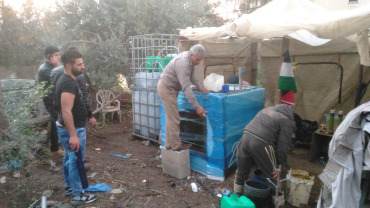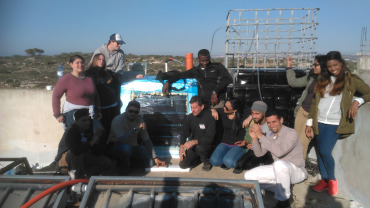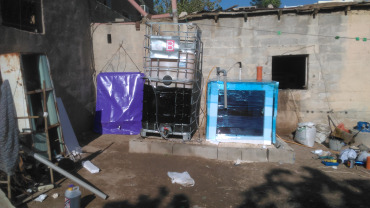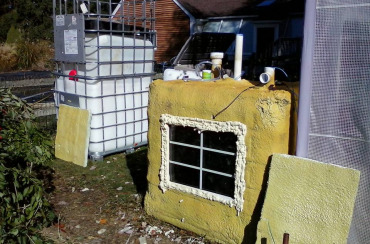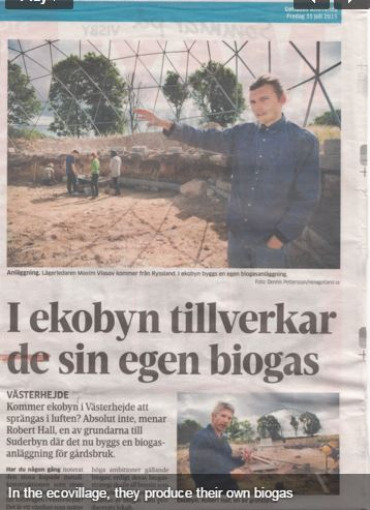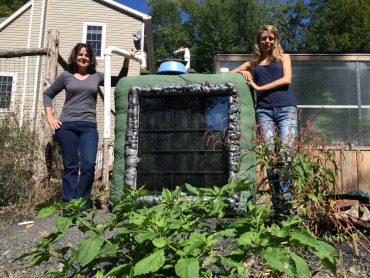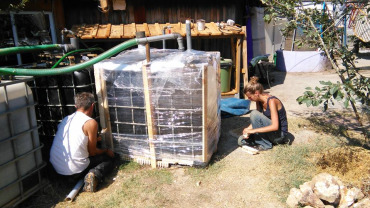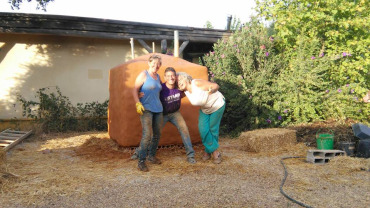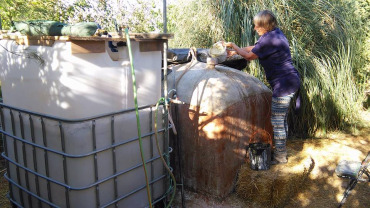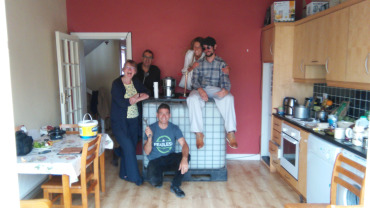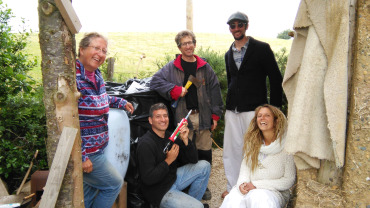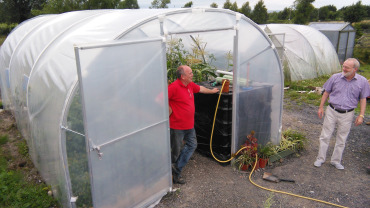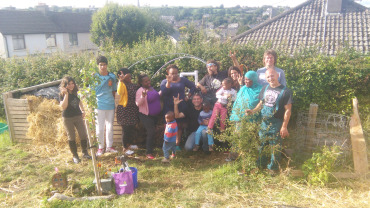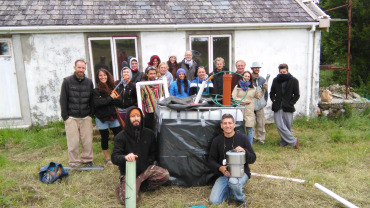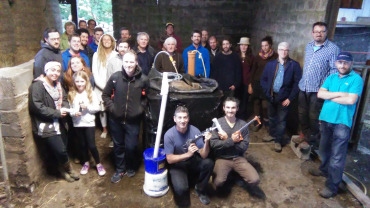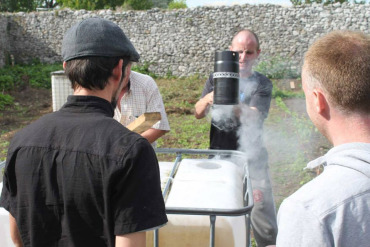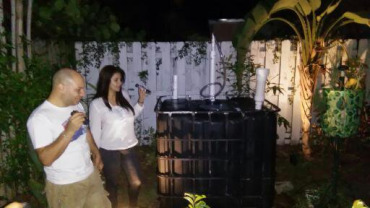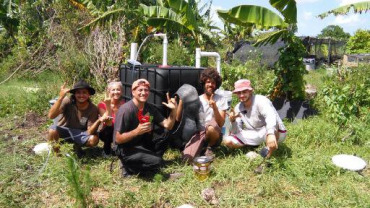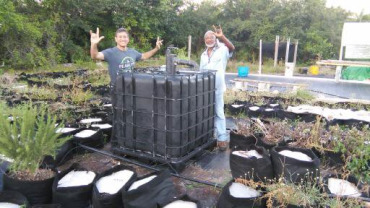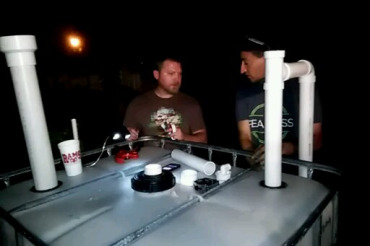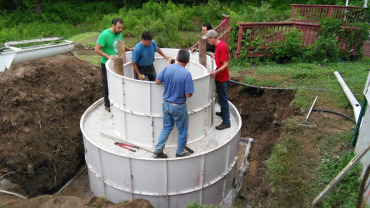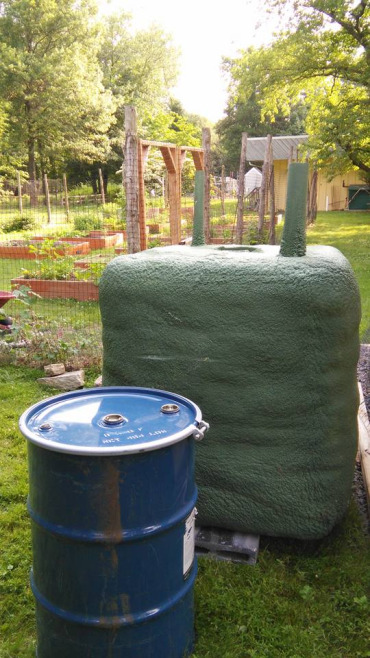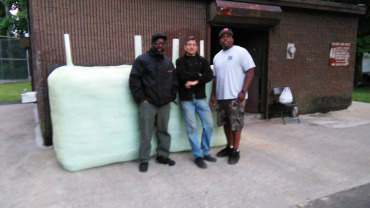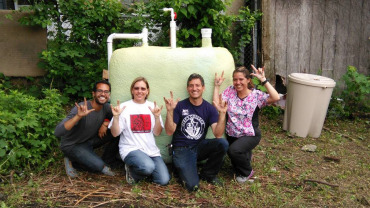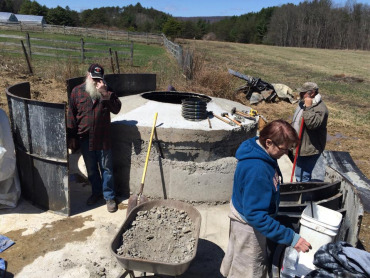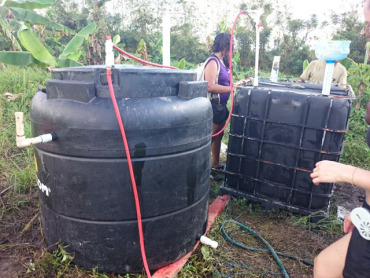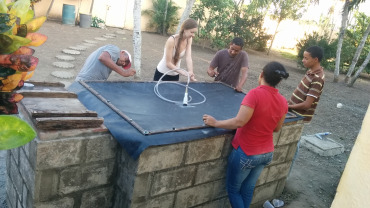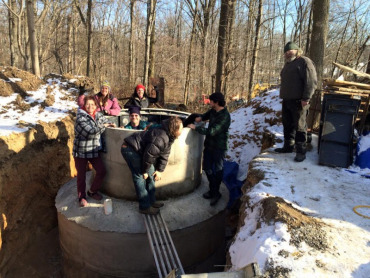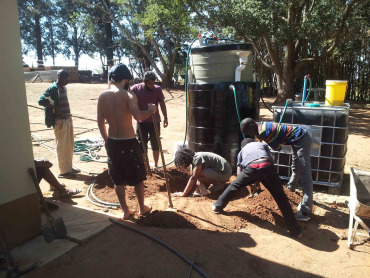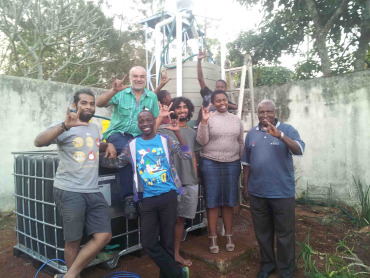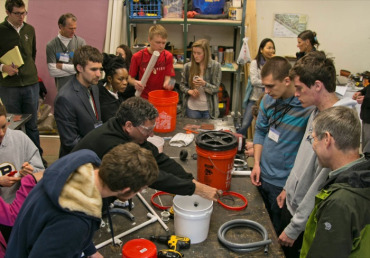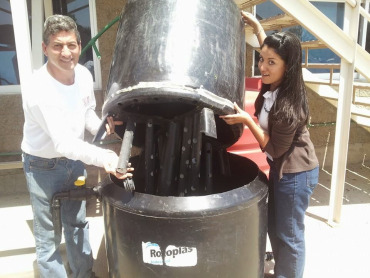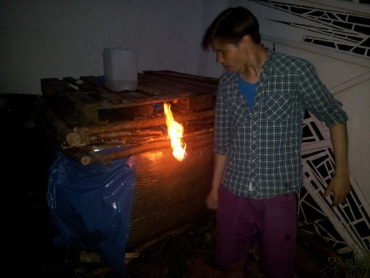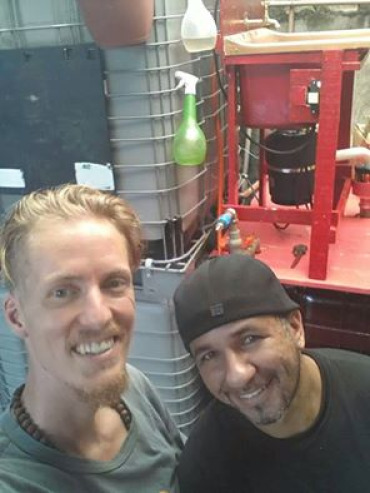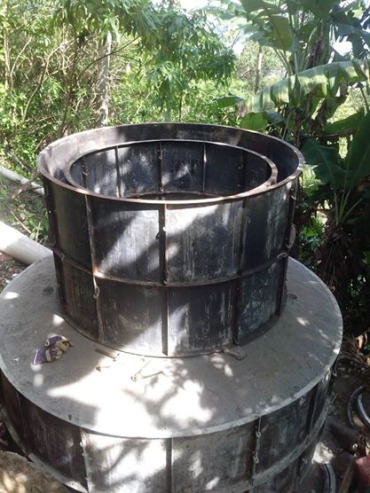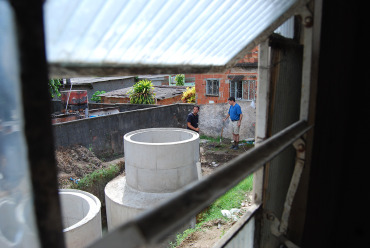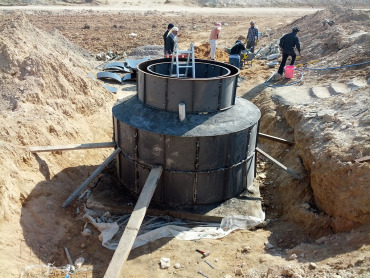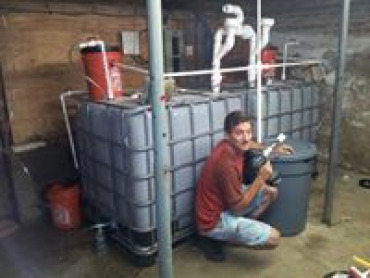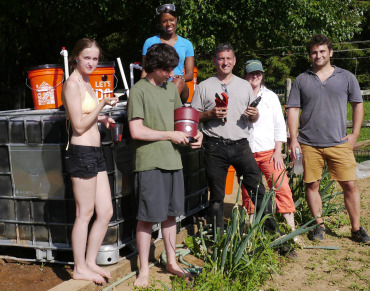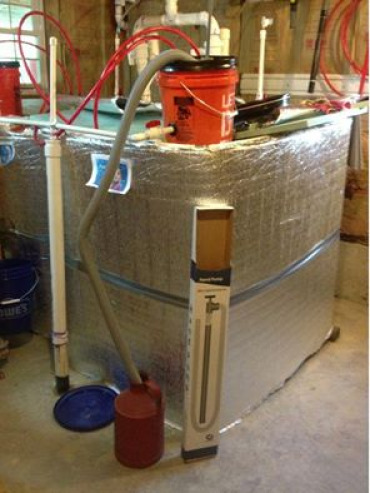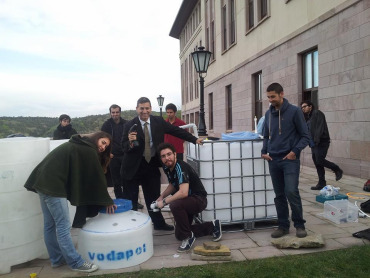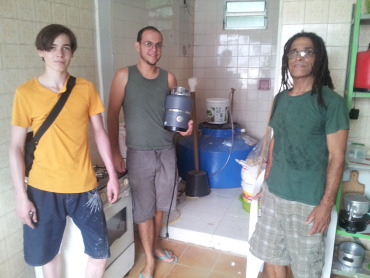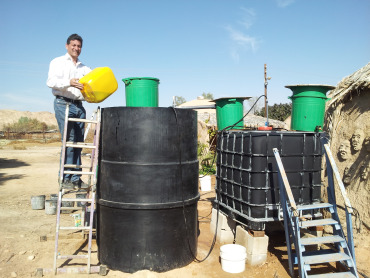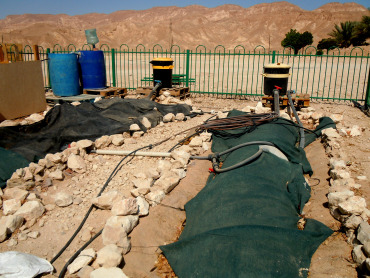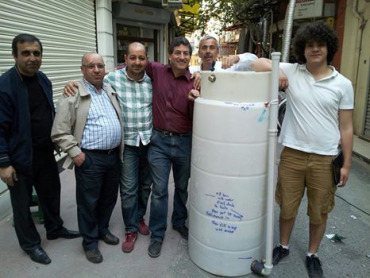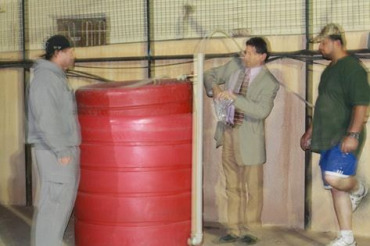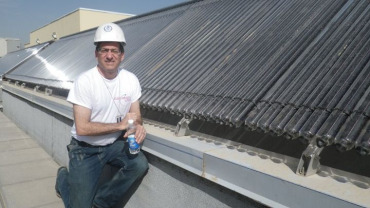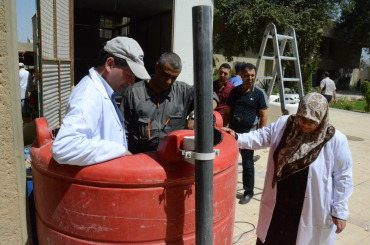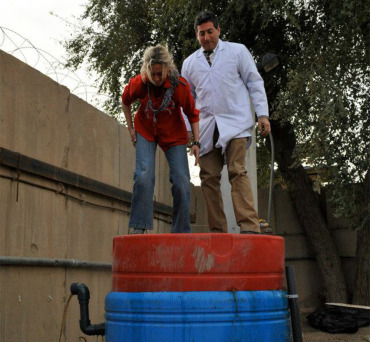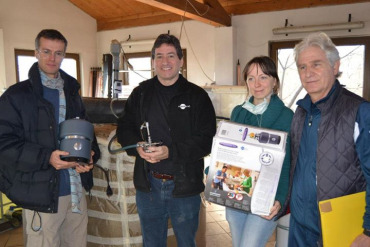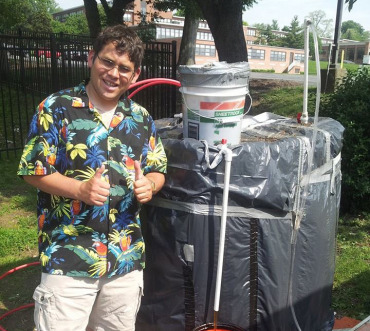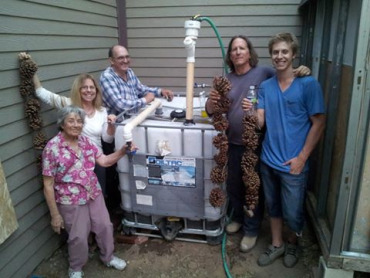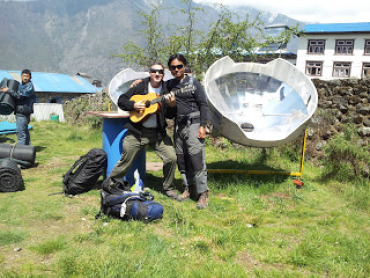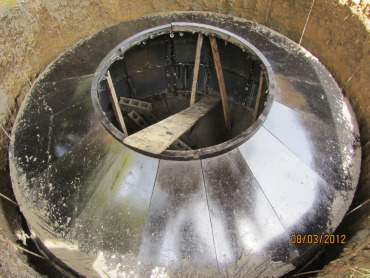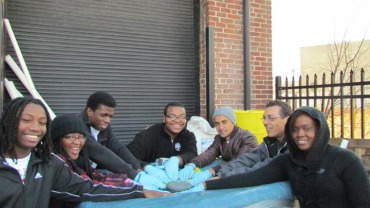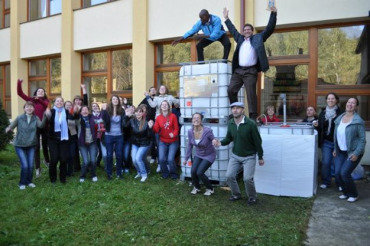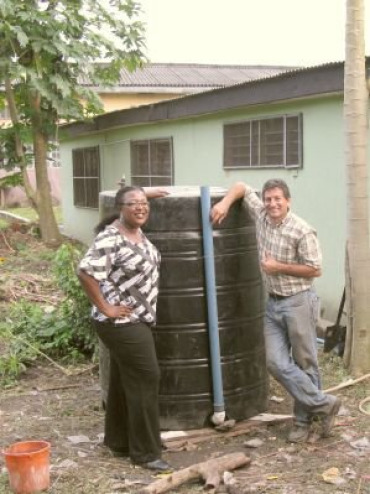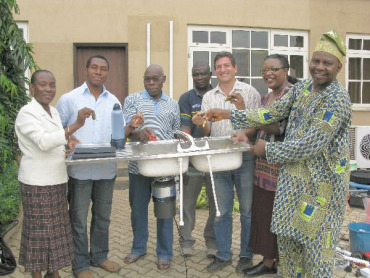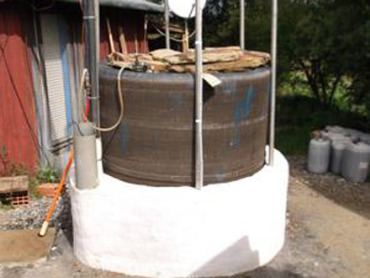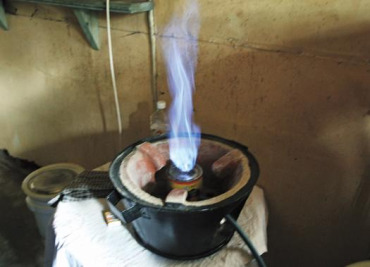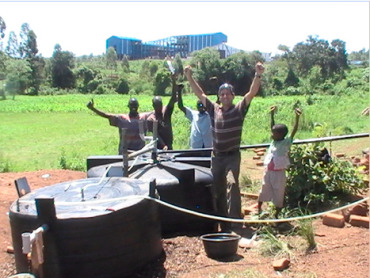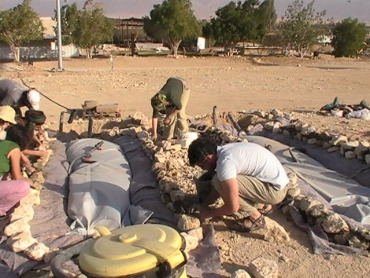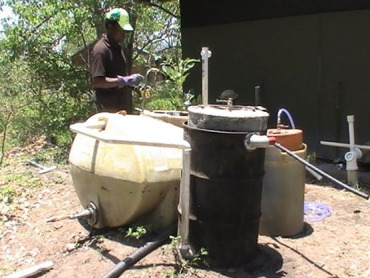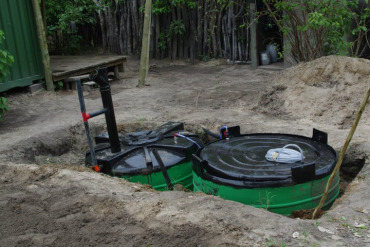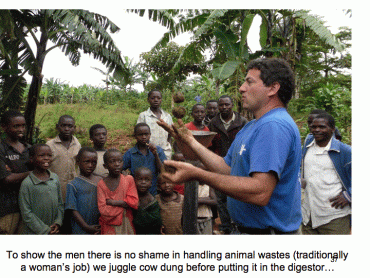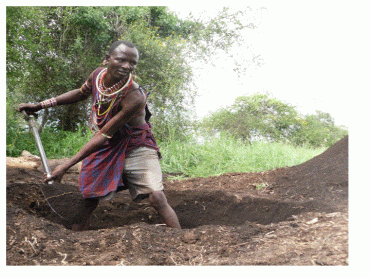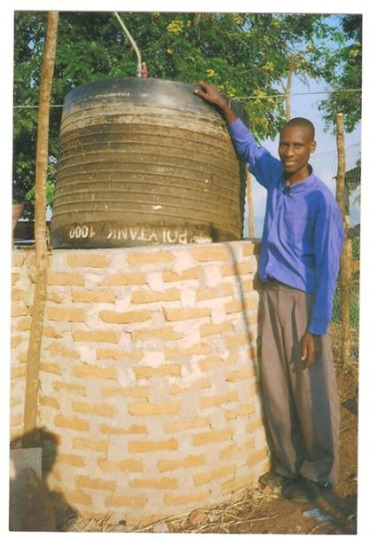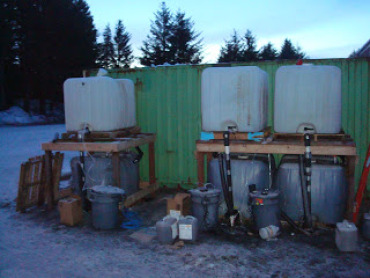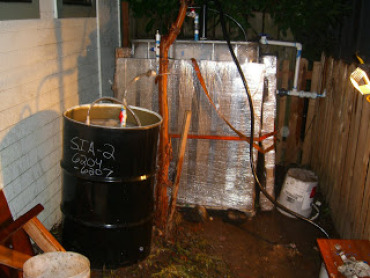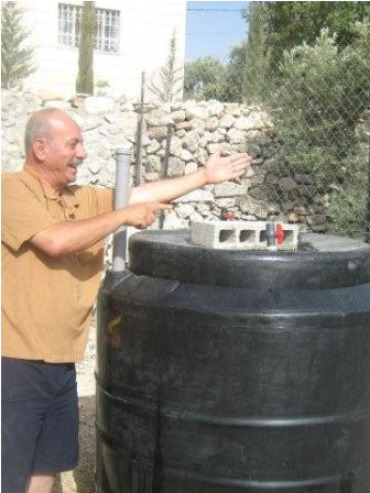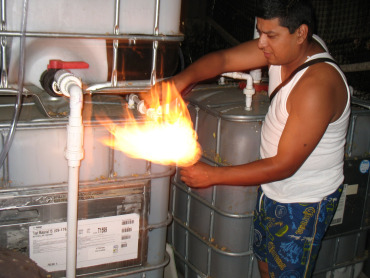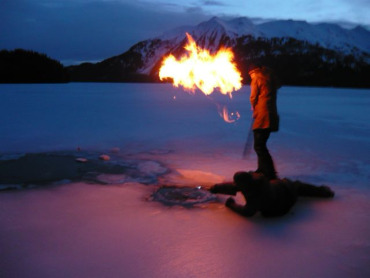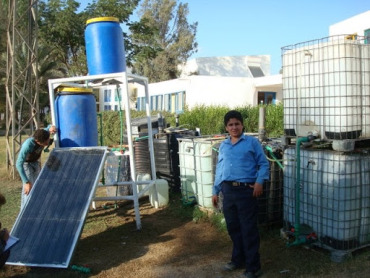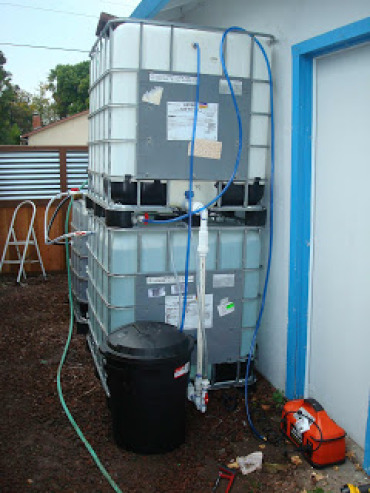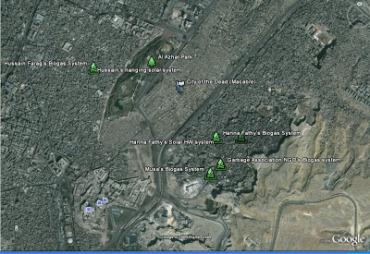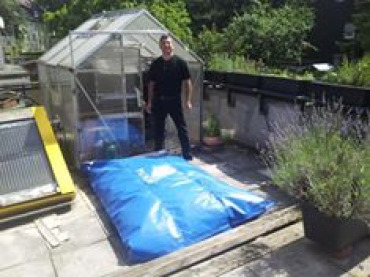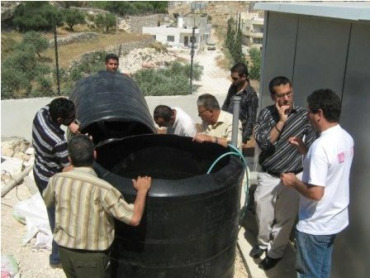Projects
In their first attempt to alter the conditions exacerbating deforestation and destruction of the Gombe National Park Chimpanzee reserve, Solar CITIES directors Hanna Fathy and T.H. Culhane joined Grace Gobbo from the Jane Goodall Institute to build the first two village digestors in the region (one in each of two villages in M'Kalinzi) where the use of firewood is rapidly eroding the edges of the wildlife park and two in the city of Kigoma on the shores of Lake Tanganyika, where charcoal use is having an even greater negative effect on the fate of the forest.
[[{"fid":"535","view_mode":"content_medium","fields":{"format":"content_medium","field_file_image_alt_text[und][0][value]":"","field_file_image_title_text[und][0][value]":"The garden of biogas delights -- three buried ARTIs, one Solar CITIES IBC as primary digester and a three oil drum horizontal digester were experimented with at this park in Chyulu Hills National Park"},"type":"media","link_text":null,"attributes":{"title":"The garden of biogas delights -- three buried ARTIs, one Solar CITIES IBC as primary digester and a three oil drum horizontal digester were experimented with at this p
In 2010 on a Blackstone Ranch Foundation/National Geographic Innovation Challenge Grant, Solar CITIES Egypt Director Hanna Fathy, from the Zabaleen Trash Recycler's Community, and Dr. T.H. Culhane, co-founder of Solar CITIES e.V.
Cultural affairs lead officer Frank Finver and Arava Institue graduate Dana Rassas brought Solar CITIES to the West Bank to do renewable energy workshops in 2010. On the last day of Culhane's stay he built Palestine's first food waste biodigester at the Palestinian Wildlife Society Eco-home demonstration area with Imad Atrash, Amer Rabayah, Mohammed Salem and friends. The program continues to this day with several dozen small scale biogas systems being built throughout the West Bank and Gaza.
When local pizza restaurant owner Brian Wildrick and his team Todd Blaisdale and Stan, learned from us and the high school students about the technology for turning their kitchen garbage into fertilizer for their fresh tomatoes and fuel to heat the tomato sauce, we and the students built a system with them at Harborside Pizza, creating the first commercial application of the technology which they talk about on their facebook page.
At the end of 2009 and beginning of 2010 the Culhanes joined Dr. Katey Walter Anthony and her husband Peter Anthony and high school science teacher Adam Low and built an experimental biogas set up in a 40 ft. conex container in the back of Cordova High School, using the 3 IBC system that Culhane, Fathy and Rimoin had designed at Sekem in Egypt in preparation for bringing small scale biogas to colder climates.
A modified Solar CITIES digestor using HDPE reactor with solar heat exchanger as reactor and 55 gallon drum telescoping gas collectors. Starter material is elephant dung and manure from 27 other species of animal from the Woodland Park Zoo in Seattle, courtesy of horticulturist David Selk and Dan Corum a.ka. "Dr. Doo"
First Bio-Gas Digester In Palestine.
The aim of this project is to use the Biogas in our Arial Home Initiative, and to use this model as an educational model for the Palestinian Communities to encourage them thinking in using this system. Incorporation with Wildlife Society Palestine and the Us-Consulate EWB-Palestine with a help from the American expert Thomas Culhane created the first Biogas system in Palestine.
Alvaro is the "poster-boy" for the success of the "green collar immigrant job training" concept; as a graduate of Trade Tech College's renewable energy program and of T.H. Culhane's early "Eutopia" Class at Jefferson High School in the 1990s where he worked with Culhane on electric and alternative fuel car conversions and green building and solar energy construction. Alvaro worked for Real Goods and for Photovoltaic Installation companies throughout California and now runs his own business in the construction/green retrofit trades and making instructional videos for the hispanic community.
In late 2009 after developing our Solar CITIES IBC-based biogas system in Cairo, Egypt in anticipation for building in cold climates, we went to Alaska to experiment with psychrophilic microbial biodigesters in IBC tanks.
Read more about the project here: http://www.freewheelings.com/cordova-alaska-biogas-digester-project/
It was here at the Sekem farm and science school outside of Cairo Egypt that Thomas Culhane, Hanna Fathy and Solar CITIES intern Mike Rimoin deployed their invention of the open-source solar heated 3 IBC Solar CITIES Biodigester, perhaps the first use of IBCs for biogas in the world. Culhane felt it necessary to build a biogas system out of IBCs because he had just won a National Geographic Emerging Explorer's Blackstone Ranch Innovation Challenge Grant with Dr.
The system is built from three identical IDB Tote HDPE tanks. To the rear one can just make out the biodigester itself. The top of the digester is connected by 1/2 inch clear plastic tubing to the top-side of the water displacement tank (WDT) . Water from this tank is forced by gas coming from the digester out of a length of clear 1/2" plastic tubing from the bottom of this tank that loops over the top of the WDT into the sump (20 gallon plastic garbage bucket in the foreground). The more gas is forced in the more water is forced out until the sump is about 3/4 full.

